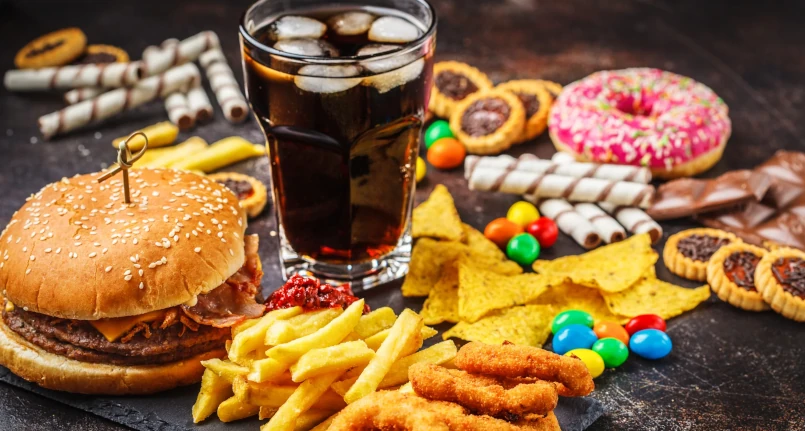Introduction
Sushi and sashimi have been popular dishes on Italian tables for years. The consumption of raw fish can have consequences related to conservation (for example in summer, with high temperatures), the cold chain , which translates into food safety risks , due to the formation of dangerous parasites , among which ‘ Anisakis and Vibrio. Both are not lethal parasites, but can cause stomach flu and fever . The biological risk of fishraw, however, it should not be underestimated, even when it is consumed at home and purchased from a trusted fish shop. Focus on quality rather than quantity, as in certain low-cost restaurants .
Sushi and risk of intoxication
The greater risk of intoxication related to the consumption of raw fish and therefore also of sushi is attributable to the presence of a fish and mollusc parasite which can infect varieties such as salmon , herring , cod , mackerel , squid , etc. By ingesting raw fish with such parasites, free access is given to the larva in the human intestine . The symptoms of intoxication are:
- abdominal pain ,
- severe nausea and vomiting .
- dizziness
- skin allergic reactions
- swelling in the throat area
- anaphylactic shock
The larva of the anisakis, this is the name of the parasite responsible for the major poisonings from raw fish, causes an inflammatory state in the gastrointestinal tract, detected with gastroscopy .
Furthermore, high levels of mercury and other toxic metals can accumulate in fish, causing poisoning with different symptoms such as muscle weakness , motor difficulty, and loss of vision . The varieties of fish that have the highest levels of heavy metals are mostly: tuna and swordfish .
Safe fish with slaughter
When you eat sushi, you must be sure that the cold chain has been guaranteed, and that the fish has been blast chilled. The anisakis larvae can also be seen with the naked eye , but the process of “abatement” of the matter which ensures the elimination of any parasites in the meat is still mandatory for restaurateurs .
The process involves freezing the fish at a temperature of at least -18° to -20° for at least 24 hours. To reach this temperature in a short time, you need to have a professional blast chiller. In this way the slaughtered fish will be 100% safe for the health of consumers.
How to store and consume raw fish at home to be safe?
At home, how can you be safe without taking risks with raw fish? Since we don’t have professional blast chillers like for restaurants, we need to make sure that the domestic freezer can reach a temperature of -20°, and that it possibly has a super freeze cell (marked with three ice stars as a symbol ) . In this case, unlike the 24 hours required for slaughter, it takes at least 4 days to eliminate the risk of anisakis.
Generally:
- marinating with vinegar , lemon , wine , etc. does not ensure the elimination of the risk of parasites
- raw freshwater fish should not be eaten
- Sushi at home: specifically ask at the fishmonger for fish to eat raw, it will already be blast chilled
- avoid farmed raw fish and prefer fish
What to do at the restaurant
When you go to a Japanese or Asian cuisine restaurant where raw fish is served, it is obviously not possible to check the methods of preservation and blast chilling in the kitchen, but it is good to observe some useful details to evaluate the safety of the fish served. The station in which raw fish is prepared, for example, must be visible, with a refrigerated display case (you can rest your hand to check ) in which the fish is displayed, on a sufficient layer of ice.
Work surfaces must be clean and tidy, uniforms and tea towels must be clean. Raw fish must appear shiny, without unusual stains or colours, odorless and compact. If you should notice a bad smell or suspect colors, it is better not to consume raw fish. Even a price that is too low and out of the market can raise suspicions about the quality of the raw material used.
Scombroid syndrome: when it occurs and symptoms
Scombroid syndrome is the consequence of a process of poor preservation of the fish, and is triggered by an excess of histamine in the fish itself. The symptoms are mild and resolve spontaneously or with the intake of antihistamine drugs in the case of more severe reactions, within 8 hours. It is characterized by:
- onset of symptoms after about 20-30 minutes of consuming the contaminated food .
- itching ,
- headache ,
- abdominal pain ,
- diarrhea and palpitations ,
- dry mouth ,
- nausea and vomiting .
Advice and recommendations
When eating sushi, sashimi, and therefore raw fish, it is good:
- prefer saltwater fish to freshwater ones: they are less subject to the formation of parasites and bacteria ;
- prefer sea bass , croaker , sea bream , top quality bluefin tuna, shellfish (but pay attention to allergens) and salmon;
- it is not recommended to consume raw fish for: children, subjects with gastrointestinal problems; elderly , pregnant women and allergy sufferers.




